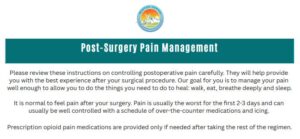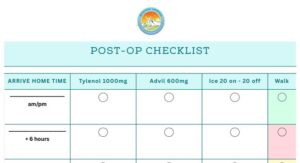Why is there pain from an inguinal hernia?
An inguinal hernia is a hole in the strength layer of the abdominal wall that allows the protrusion of abdominal contents through the inguinal canal. The inguinal canal contains blood vessels, spermatic vessels, and nerves that travel to the testicle. When a hernia is present, bulging contents of the hernia compress these structures, often leading to a feeling of heaviness, pressure or even pain. The pain may be localized to the bulge, or the pain may radiate (shoot down) to the scrotum (the sac where the testicles are) or inner thigh. Some people describe intense pressure or even burning. These symptoms will only occur when the contents bulge through the hernia. Most people feel pain at the end of the day, after prolonged standing or sitting. Most people get relief from pain when they lay down flat. It is rare to feel sharp stabbing pain with a hernia, as this kind of pain is often due to a musculoskeletal injury.
How do I relieve pain from an inguinal hernia?
How do I relieve pain from an inguinal hernia?
Laying down flat:
Many people who suffer from discomfort or pain from an inguinal hernia find that laying down flat on their backs can relieve most of their symptoms. This is because this is the position which most easily allows bulging hernia contents to return to the abdominal cavity and stop compressing the surrounding structures.
Pushing the hernia back in:
Some find it necessary to massage the hernia back into their abdomen. Most people have figured this our on their own. While we advise most patients we have evaluated that it is safe to to this in the short term, there is no substitute for surgery.
Hernia belt or Hernia Truss:
After pushing the hernia in on their own, some patients describe great success with a hernia truss
Surgery
Surgery will alleviate hernia pain right away by preventing abdominal contents from bulging. Anyone that has pain that restricts their activity level should be evaluated by an experienced hernia surgeon to understand their options. Over-the-counter pain medication use is not typically advised, as pain severe enough to warrant medication is often an indication for surgical intervention. Recent data suggest that prescribing opioids before surgery increases a patients risk of becoming opioid dependent after surgery – a practice we don’t condone.
Relieving hernia pain with a hernia belt or truss
Some patients are unable to schedule their surgery right away, usually because of a work commitment, planned vacation, or current medical situation. A hernia belt or hernia truss can be a great bridge to surgery in these scenarios. Most local hospital supply pharmacies and many online retailers carry a hernia truss that can easily fit over undergarments. The truss should be put on while lying down, with the hernia fully reduced, when no bulge is present. By tightening the truss in this position, the hernia contents will be kept inside the abdominal cavity. Placing the hernia truss over an already bulging hernia will only further compress these tissues and can increase symptoms like pressure and pain. Using a hernia truss helps most patients with pain management for the short term until they can schedule surgery. One product that our patients tell us works well is Comfort Truss.
Relieving pain after hernia surgery
Type of surgery can definitely impact the amount of pain a person experiences after surgery and we tailor our approach with this in mind. Research on our outcomes after hernia repair demonstrates that most of our patients use only Tylenol and/or Motrin after inguinal hernia surgery. As a result, we have stopped routinely prescribing opioid pain medication after surgery, and instead rely on multimodal pain management techniques. In our practice, 91% of our patients manage their pain without opioid pain medications. We advise that our patients take both Tylenol (acetaminophen) and Motrin (ibuprofen) together every 6 hours. We often recommend icing the area for 20 minutes at a time, through a towel, so that ice does not come into contact with the skin directly.
We prescribe oxycodone for the patients who need it, those who have taken the tylenol and ibuprofen, used ice, and still have significant pain preventing sleeping at night or getting out of bed and walking around during the day. This is only the case in less than 1 in 10 patients recovering from our repairs.
In patients who have a higher degree of pain than normal, or patients who have a history of chronic pain or substance use disorder, we sometimes partner with our pain specialist to provide a more customized approach to pain management. Treating pain post-operatively is often a balance between making patients comfortable and exposing them to substances that have the potential for serious side effect and possible addiction. While we strive to make our patients as comfortable as possible with the generous use of local anesthesia during surgery, we advise our patients that having some discomfort or pain after surgery is preferred to some of the side effect of opioids. The Americas Hernia Society Quality Collaborative has been working hard to provide patients with information about ways to manage their post-op pain. Click here to download note-card of optimal ways to treat post-op pain and Click here to download a brochure about taking opioid after surgery
_______________________________________________________
We have also created some more detailed guidelines and a helpful guide for family or friends caring for a loved one recovering from hernia repair below. In order to be as best prepared as possible for your surgery and recovery, we encourage you to review these and print them prior to your hernia surgery.
About Dr. Reinhorn & Dr. Fullington
Dr. Michael Reinhorn is a specialist in inguinal hernia and umbilical hernia. Dr. Reinhorn started his practice as a full service general surgeon in 2001. In 2012 Dr. Reinhorn started to focus on the care of hernia and pilonidal patients. In 2020, Dr. Nora Fullington was recruited from her work as a general surgeon performing hundreds of laparoscopic hernia repairs to Boston Hernia. Together with their physician assistant team, they provide a focused practice designed to provide a superior clinical experience. The team performs approximately 700 hernia surgeries every year and offers a tailored approach for each patient from anesthesia type to consideration of mesh and no mesh repairs, laparoscopic and open surgery. We have published outcomes and continue to participate in hernia and surgery societies. Our research led to a reduction in opioid prescribing after hernia surgery. Currently, Dr. Reinhorn serves as the chair of the Opioid Reduction Task Force of the Americas Hernia Society Quality Collaborative.
The whole experience was great. Post-surgery pain was minimal, handled with advil only. The hernia repair has eliminated the pain and discomfort completely. Dr. Reinhorn and his team were as good as it gets.
11/25/15 – vitals


